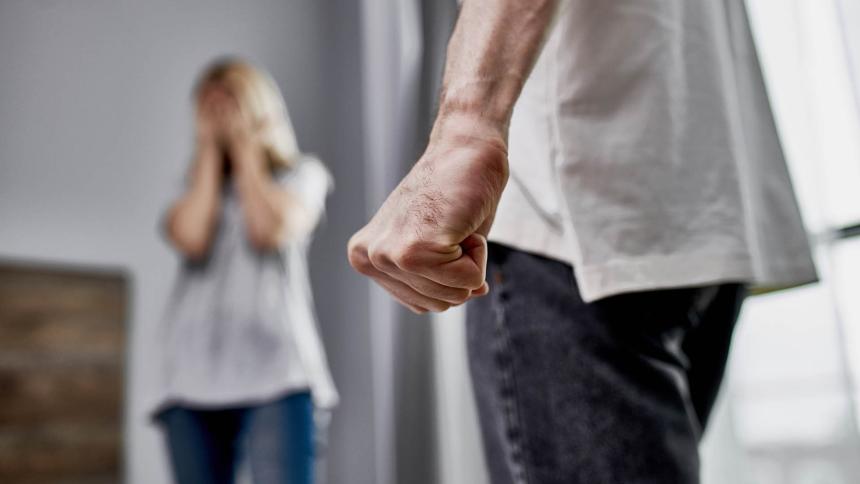
The warning signs of domestic abuse
There’s a reason why domestic abuse is known as the silent killer: most cases take place behind closed doors. But with two women a week dying on average in England and Wales at the hands of their abuser, this isn’t a problem society can afford to ignore. That’s why Crime+Investigation is launching Here for Her: the next stage of the End Abuse Campaign in partnership with Refuge. We can all show we are #HereForHer and try to help victims of domestic violence, but first, we need to be able identify the signs to find out who might be at risk.
So what are the signs someone is being violent to their partner? Abusive behaviours in a relationship can include someone:
- Belittling their partner and putting them down in public, in front of family and friends.
- Isolating them from their friends and family, so they no longer have a support system.
- Stopping them from going to work or school.
- Controlling their finances, so they don’t have money for necessities.
- Accusing them of having affairs or flirting with other people.
- Monitoring their movements.
- Reading their texts and checking their social media and emails.
- Controlling where they go, who they see and what they wear.
- Blaming them for the arguments and abuse.
An abusive partner might threaten to hurt or kill their partner, themselves or their children over their partner’s actions.
- Invade their personal space and physically threaten them.
- Harass or follow them.
- Destroy their things.
- Physically hurt them, including biting them, kicking, slapping pushing, shoving and hitting them.
- Pressure them into having sex, or unsafe sex.
- Make unwanted sexual demands.
- Hurt them during sex.
- Rape them.
Women in abusive relationships might change how they act because they’re afraid of incurring their partner’s anger.
- They might have injuries, which they make excuses for, or wear clothes that cover them up, regardless of the season.
- They might check in with their partner more often.
- They may never have money on hand.
- They might stop attending social occasions and see less of family and friends.
- They might show changes in personality, like lower confidence and self-esteem.
Unfortunately, the signs aren’t always recognised, which is why the numbers of women who die at the hands of their abuser are so high: two women a week are killed by a former or current partner a week in England and Wales.
Robert Trigg is one example of a man who was able to kill two of his partners before he was finally sent to prison. In 2006, Caroline Devlin was found dead in the bed she shared with Trigg by one of her children. It was Mother’s Day. Devlin’s death wasn’t treated as suspicious: the pathologist ruled it was an aneurysm.
Then, in 2011, a second woman who had been living with Trigg was found dead: Susan Nicholson had been suffocated. Trigg said they had fallen asleep on the sofa after drinking. He woke up on top of her lifeless body. Once again, the death was found to be not suspicious: the result of drinking and an accidental smothering (even though the sofa was too narrow for two people to be able to sleep on).
This came despite the fact that Trigg had a history of assaulting his girlfriends: he had been cautioned in 2003 for assaulting Susan Holland. There was also a record of his assaulting Nicholson. A neighbour had called the police multiple times, recording sounds of a disturbance in the flat Nicholson and Trigg shared. Once, they found her with visible injuries: black eyes, cuts and bruising to her body. Trigg was cautioned for battery
Trigg is not alone in men who are able to move from one abusive relationship to another
Nicholson’s parents launched a five-year campaign to get justice for their daughter, refusing to accept her death was an accident. After several complaints to the Independent Police Complaints Commissioner that resulted in reinvestigations (but which ultimately upheld the original investigation into their daughter’s death as satisfactory) the couple hired a lawyer. Evidence was unearthed that showed Nicholson’s death was likely the result of strangulation.
It was only when another woman Trigg had been dating, Deirdre Loveridge, reported him to the police for harassing her, sending her abusive messages and calls and threatening her that they finally reopened the cases he was involved in. They ruled that Devlin hadn’t died of an aneurysm after all, but a blow to the head.
Eventually, Trigg was arrested, but not before he started dating someone else: Caroline Yarwood. When he was released on bail, he sent her abusive messages and then assaulted her at her work. He was arrested again.
In 2017, Trigg was put on trial. He was sentenced to 25 years in prison. During the trial, Trigg’s full history of violence with otherwoman, dating back to years before Devlin died, came out. The police had known about his history, but still, the deaths that occurred in his homes (including two partners dying in their sleep) were not connected or treated as suspicious until years later.
Trigg is not alone in men who are able to move from one abusive relationship to another and as almost one in three women, aged 16 to 59, will experience domestic violence in her lifetime, according to the Office of National Statistics, more needs to be done to hold the abusers accountable and protect women.
In the meantime, we can all do our best to show we’re #HereforHer.








